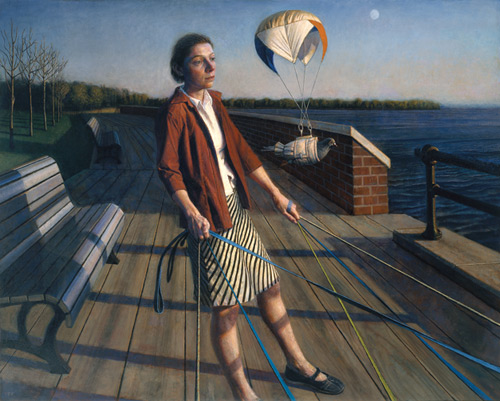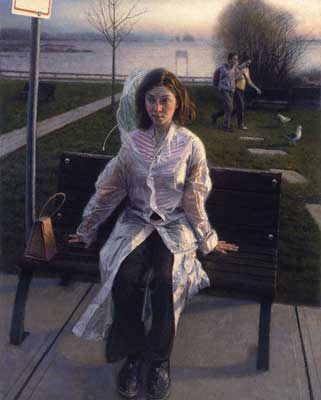A Ruby Glow — Glazing Secrets from Vermeer to Rembrandt


Modern Oil Painting Needs an Old Master’s Boost: Glazing
“Just as we can look deep within a ruby so can we look deep within a skillful glaze.” Powerful words from Michael Wilcox but he knows that of which he speaks–and delivers! The author of a gorgeous book simply titled, Glazing, Wilcox offered us this excerpt that gives an historical account of the Old Master skill that every modern oil painter will want to explore. The luminosity and glow that glazing brings is that important!
Also included below is “Texture and Glazing,” a close-up look at a contemporary figurative painting by artist Paul Fenniak, who explains five notable aspects of the subject’s face.
That’s a one-two combination sure to lure you deeper into the oil painting techniques that connect artists of the present to the past, and give each one of us the unique opportunity to explore painting fully.
***
Why Was Glazing Even Developed?

There were very definite reasons why earlier artists evolved the technique of glazing. Originating in northern Europe, the practice was developed and refined by artists such as Van Eyke, Vermeer and Rembrandt. Living and working in what were often cold and damp conditions wasn’t conducive to conventional painting as we know it. For a start, oil paints tended to dry more slowly than in the warmer countries to the south, whereas thin applications of paint dried more efficiently.
Another factor is that they didn’t have access to the wide range of colorants that we have at our disposal. Bright violet pigments, for example, were not available, neither were bright oranges or many of the other ‘clean’ strong colors that we take for granted. Such hues, albeit not particularly bright, were mixed from others and glazing was found to be the most satisfactory way to produce them. Violets, for example, could be produced from a mix of blue and red, but brighter, ‘cleaner’ violets had to be produced by glazing the blue over the red, or vice versa.
Most importantly, the artists were aware of the superior optical effects that were available. We must remember that they were obliged to work with a very limited palette and a range of support materials, additives, varnishes, etc., that we would struggle with. As with today’s realist artist, they sought to replicate the complex array of sensations that the layperson might describe simply as color. (An excerpt from Michael Wilcox’s book, Glazing)

Texture and Glazing–Do They Go Together?
I kept changing my mind about this head, so the mess of semi-erased heads beneath this one was helpful in suggesting the final form. I used a large brush loaded with blue-gray to paint broad swaths around the shapes left by the previous heads until I saw something in all the chaos that seemed right and then based my model’s pose on that. One great benefit of this otherwise annoying and time-consuming intuitive method is the build-up of textures.

A In the area around the mouth, under the lip particularly, I brought out underlying texture by scraping to interrupt what was the flat opacity of the green-gray shadow.
B Around her right eye, the already textured surface allowed me to lightly drag thin paint with a soft flat brush over the ridges of dry paint to suggest wrinkles and break up the surface, thereby animating the flesh. I also dragged wet over dry paint in the highlight on the forehead.
C I established the basic shape of the head with strong blue-violet shapes with crimson edges on the side of the head and the side of the nose.
D For producing the effect of late-day sun shining in her face, I used a progression from yellow to orange to red to crimson—but crucially with accents of cool, light blue-grays (and occasionally green), especially on the edge of the forehead and along the edge of the nose.
E Bright sun meant there should be conspicuous reflected light in the shadows. This is most evident along the jawline and on the neck, where I glazed the crimson underpainting with ultramarine violet. (Paul Fenniak)
***
Isn’t glazing’s history as fascinating as its application in modern oil painting? I’m bowled over by the fact that now I really understand how Vermeer and Rembrandt used glazing to create their masterpieces. See how you can get the “ruby glow” Michael Wilcox mentions by getting your copy of Glazing, and from there you get to decide where and how to use the technique to express yourself, whether it is following in the footsteps of the Old Masters or stepping out on your own.
Enjoy!
Courtney





Have a technical question?
Contact UsJoin the Conversation!